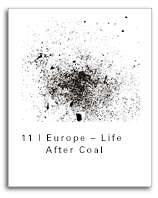-
Services
Services
- Cœur d'activité
- Exploration minière
- Évaluation du projet d'exploitation minière
- Environnement et responsabilité sociale
- Géologie et ressources
- Génie des mines
Exploration minière
- Définitions de cibles d'exploration
- Télédétection et géophysique
- Géochimie d'exploration
- Analyse structurale de terrain
- Planification du projet d'exploration minière
- Echantillonage, analyse, assurance et contrôle de qualité AQ/CQ
- Services d'exploration minière sur le terrain
- Santé et sécurité des activités d'exploration
Évaluation du projet d'exploitation minière
Environnement et responsabilité sociale
- Chimie des eaux de drainage de la mine
- Assainissement des sols et des eaux souterraines
- Étude d’impact environnemental et social
- Comptabilisation carbone
- Consultation des parties concernées et mobilisation du public
- Planification de gestion environnementale et sociale des exploitations minières
- Électrification du transport à ciel ouvert
- Changement climatique
- Réinstallation et restauration des moyens de subsistance
- Obtention de permis environnementaux
- Surete des sites nucleaires
Géologie et ressources
Génie des mines
- Conception, planification et ingénierie – Mine à ciel ouvert
- Conception, planification et ingénierie – Mine souterraine
- Géologie minière pour la planification et l'optimisation
- Économie et finances de l'exploitation minière
- Assistance à l’exploitation minière
- Électrification du transport à ciel ouvert
- Simulation Minière
- Exploitation minière par foudroyage
- Ventilation des mines
Gestion de l’eau
Géotechnique minière
Fermeture de mines
Gestion des déchets miniers
Métallurgie extractive et traitement de minerai
Génie civil et ingénierie des structures
Géologie structurale
Estimation des ressources minérales
Assistance opérationnelle de sites miniers
Ventilation des mines
Eaux souterraines
Eaux de surface
Eaux d’exhaure
Traitement et qualité des eaux
- Consultants
- Projets
- Produits
-
Centre de connaissances
- Actualités et évènements















